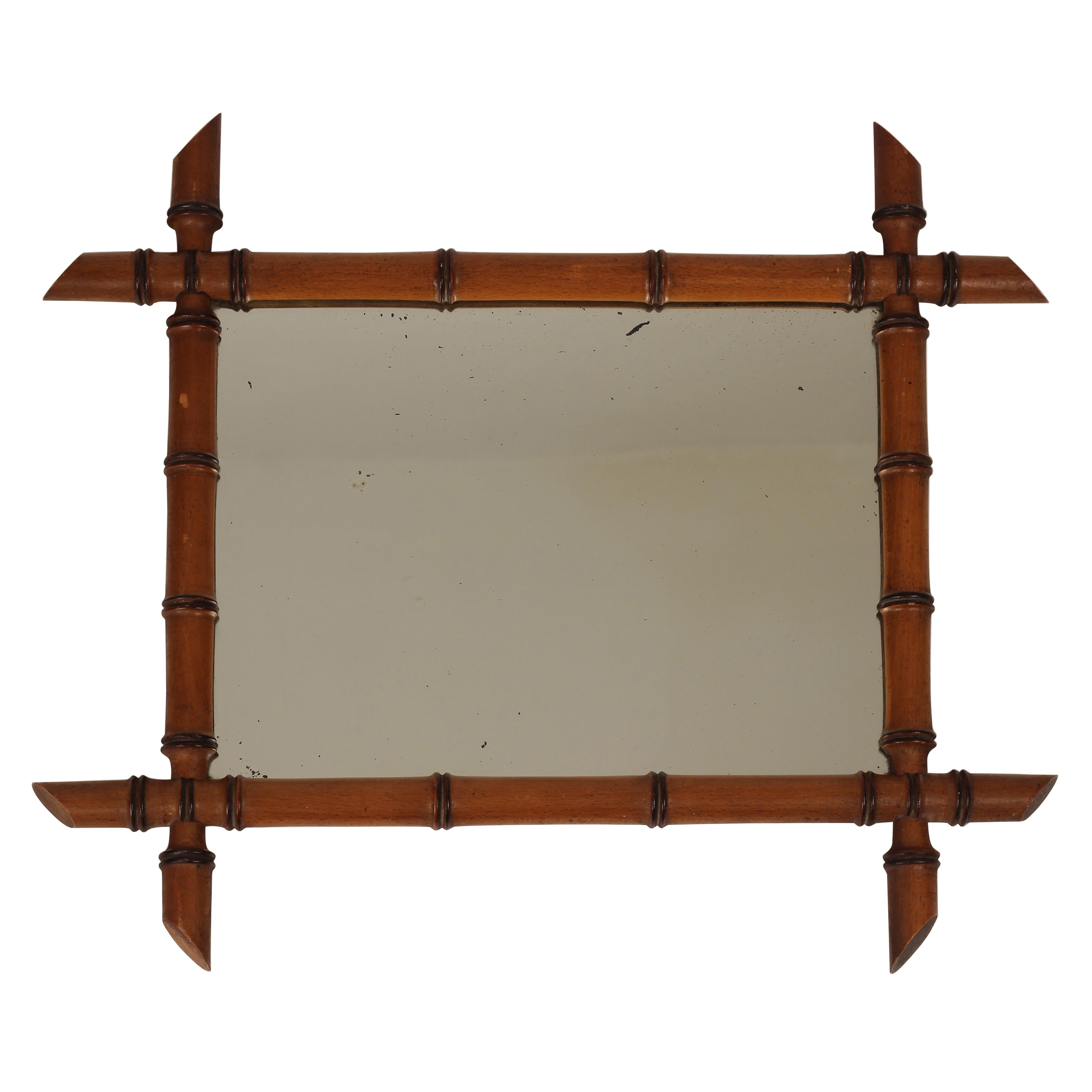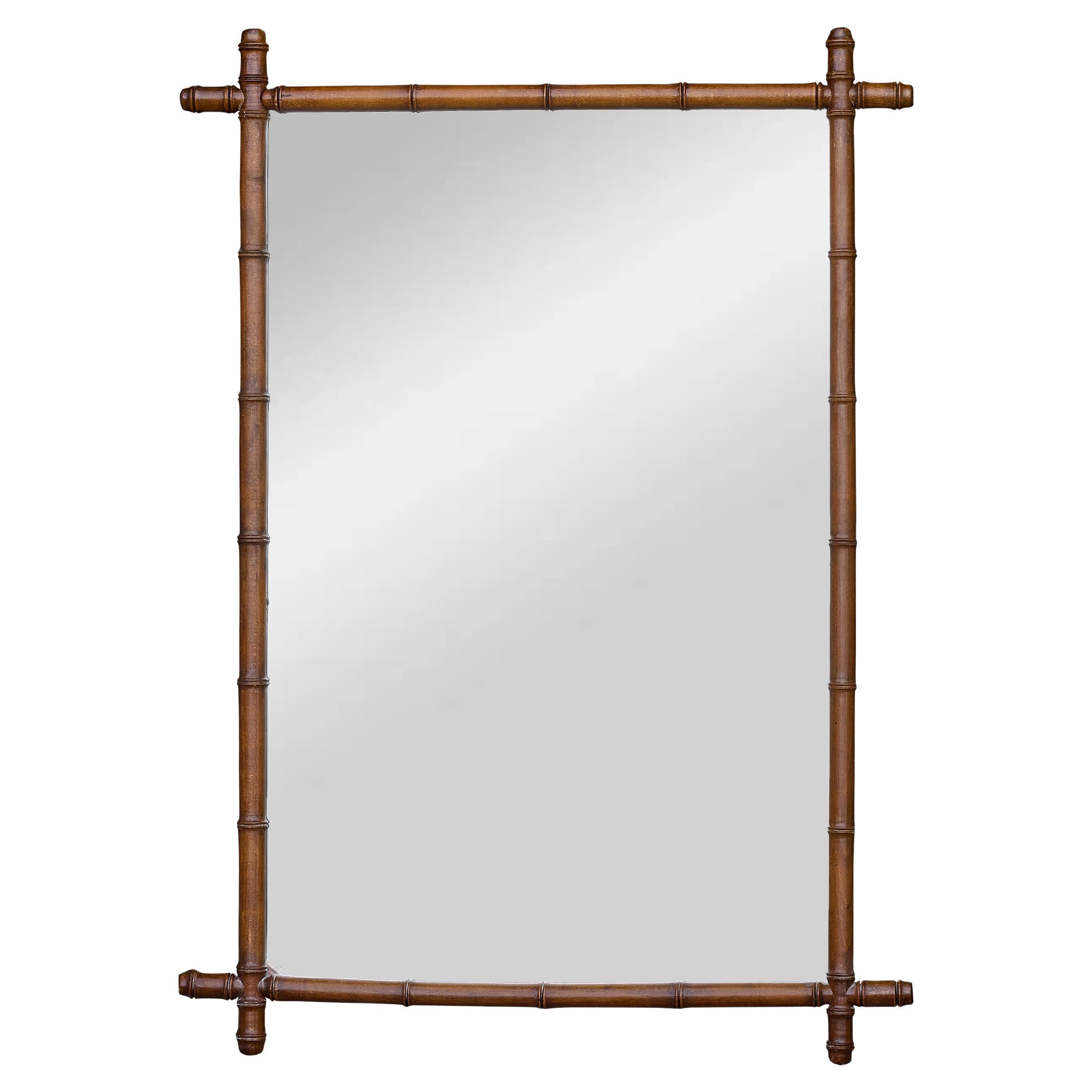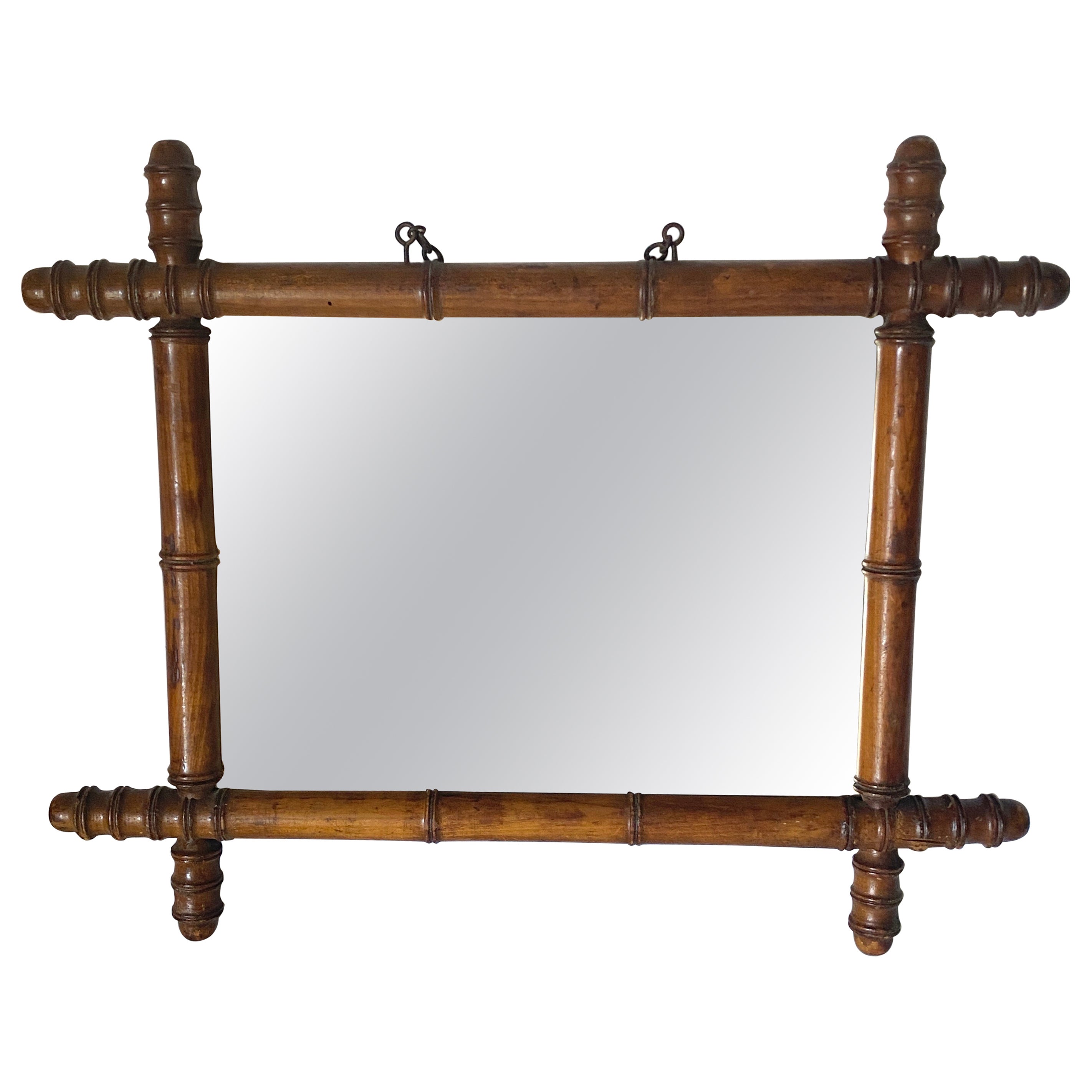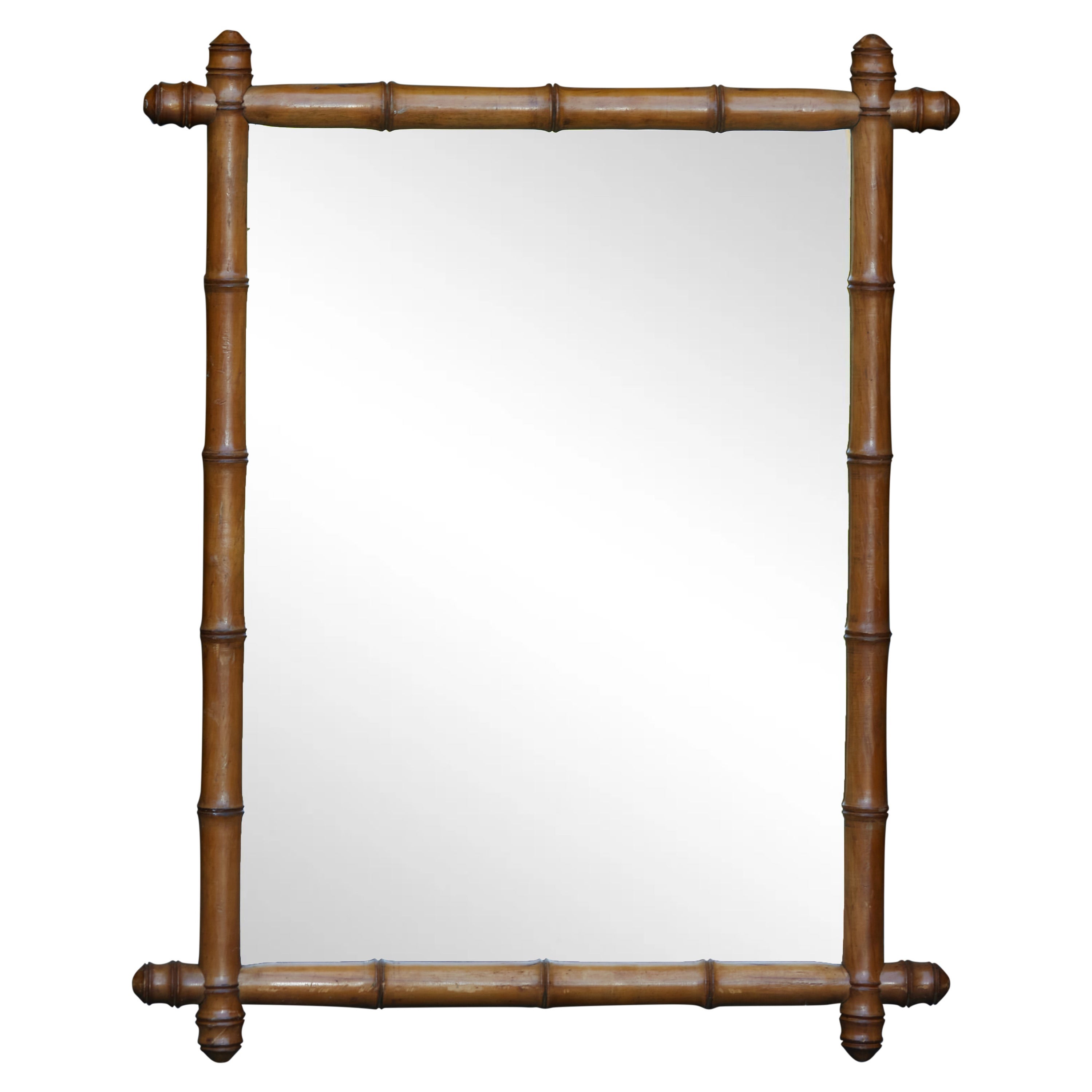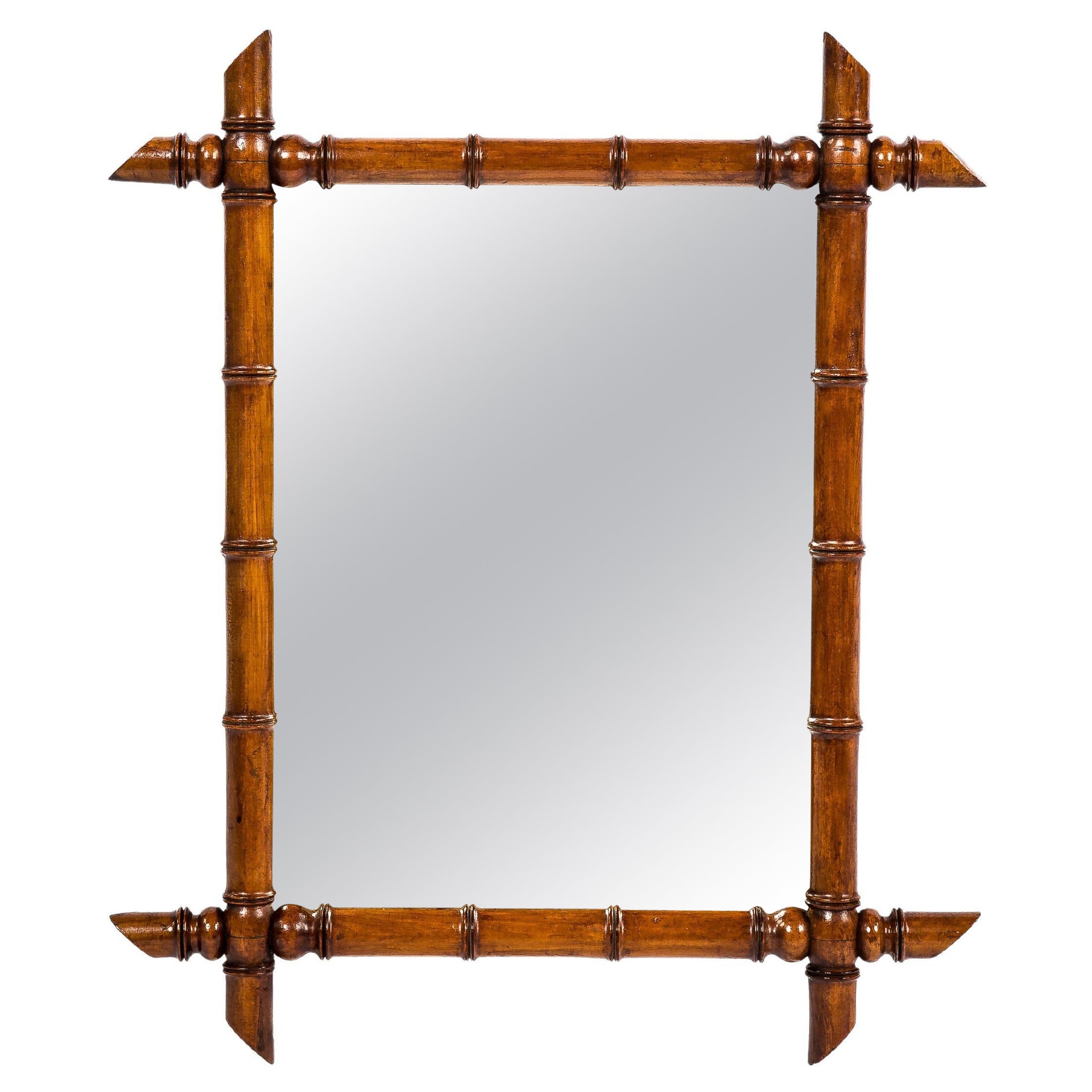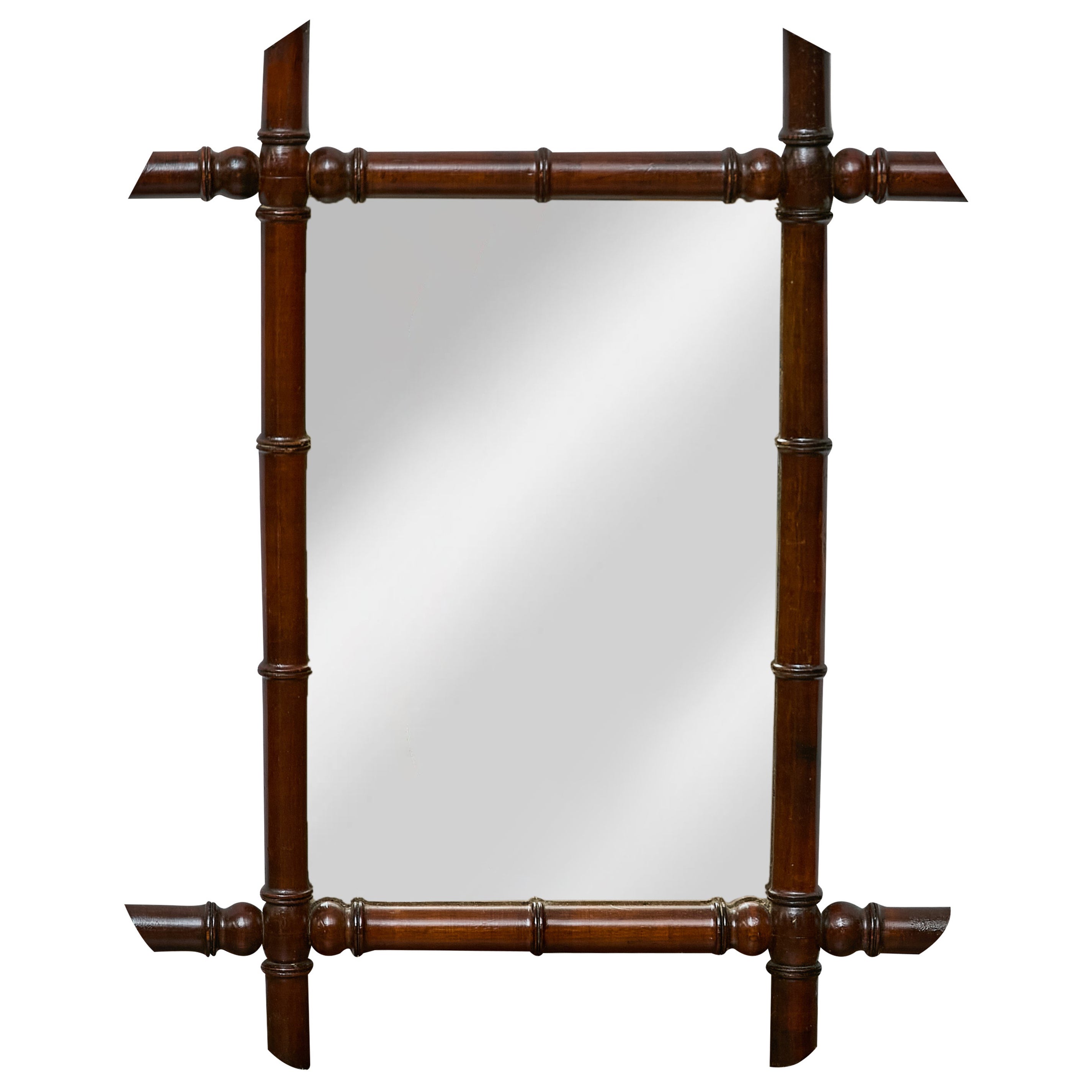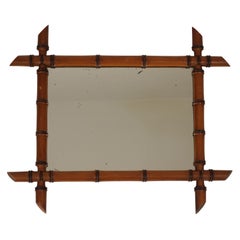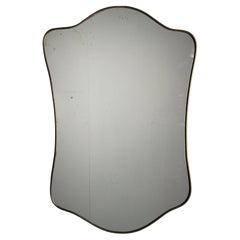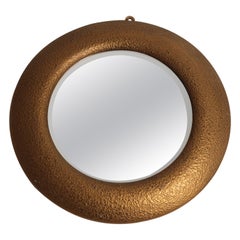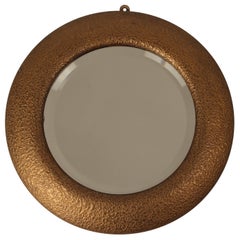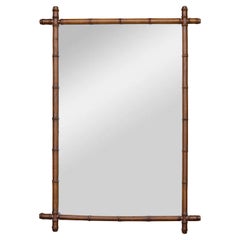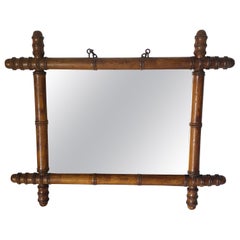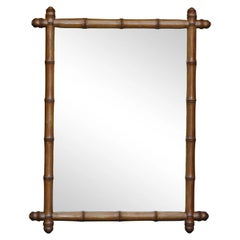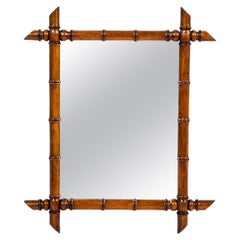Items Similar to Faux Bamboo Walnut Framed Mirror Made in England 1800’s in Boho Chic Style
Want more images or videos?
Request additional images or videos from the seller
1 of 11
Faux Bamboo Walnut Framed Mirror Made in England 1800’s in Boho Chic Style
$926.13
£680
€796.94
CA$1,298.20
A$1,430.32
CHF 740.42
MX$17,221.39
NOK 9,375.49
SEK 8,807.68
DKK 5,950.20
About the Item
A Faux Bamboo Walnut mirror of beautiful warm tones, together with it’s original hanging chain in the Chinoiserie/Aesthetic Movement style. Refreshed and revived by professional restorers this piece is in good condition. We are seeing history repeat itself with this fascination and the emergence of a new contemporary boho Chic Style in our modern interiors which is heavily influenced by these historical movements.
The Aesthetic Movement was influenced heavily by the stylised renditions of China and Japan, and referenced it through many objects, fabric and wall hangings. The Aesthetic Movement in Britain (1860 – 1900) aimed to escape the ugliness and materialism of the Industrial Age, by focusing instead on producing art that was beautiful rather than having a deeper meaning – 'Art for Art's sake'. The artists and designers in this 'cult of beauty' crafted some of the most sophisticated and sensuously beautiful artworks of the Western tradition and in the process remade the domestic world of the British middle-classes. A few key members of Rossetti's circle took a keen interest in the design arts, seeking to transform banal and pretentious furnishings and domestic objects of the middle-class home. With a refined sensibility to line and geometrical form or, in the case of William Morris, with a feeling for natural ornament and harmonious colour, these designers aimed to produce chairs and tables worthy of the name 'Art Furniture' and to create ceramics, textiles, and wallpapers entirely unlike ordinary 'trade' wares. These were to be quality household goods that would please the eye of the artist and grace the houses of Aesthetic patrons, collectors and connoisseurs. It was argued that if furnishings were refined enough in form, materials and their quality of making, and carefully considered in colour, they – and the decorative arts in general – could rise to a new level and blur the Royal Academy's longstanding strict division between the 'fine' arts of painting, sculpture, and architecture and so-called artisan crafts – decorative arts design and fabrication. A perfect example of this approach can be seen in William Morris's Red House, designed by architect Philip Webb and described by Rossetti as 'more a poem than a house'. Its coordinated style, described as 'neo-vernacular mellowness with high art seriousness', would become Morris's trademark. The artful home showcased an array of artistic bric-a-brac, but items of Japanese origin or inspiration took pride of place. Japan's forced opening to foreign trade in 1853 revitalised the European veneration of all things Japanese, exemplified by England's passion for old 'Blue-and-White' Asian ceramics. Extensive displays at the Old Water Colour Society and the 1862 International Exhibition's Japanese Court introduced a wider audience to enticingly 'exotic' Japanese forms. A Japanese inflection – featuring asymmetry, flat patterning, simplified form and elegant surface ornament – became a hallmark of the Aesthetic vocabulary. Furniture forms were also reimagined by Aesthetic designers. Unlike the heavily ornamented curvilinear Louis XIV styles so popular with Victorian consumers, Artistic furniture is elegant and simple in design. Despite appearing 'modern' to today's eye, Aesthetic designs reference Asian, Egyptian, Greek, vernacular, and even delicate 18-century English examples.
Though bamboo went in and out of fashion throughout history (and we’ll by no means assert this as a comprehensive history), faux bamboo furniture made its comeback in a big way as a welcome change to heavy Victorian styles. The Exposition Universelle of 1867, a world’s fair held in Paris, reignited the chinoiserie craze and sparked high demand for Japanese furniture in particular.
- Dimensions:Height: 1.19 in (3 cm)Width: 20.28 in (51.5 cm)Depth: 16.54 in (42 cm)
- Style:Chinoiserie (Of the Period)
- Materials and Techniques:
- Place of Origin:
- Period:
- Date of Manufacture:1860-1900s
- Condition:Refinished. Repaired: The frame has been professionally polished and the back of the mirror has had a replacement base board attached. Wear consistent with age and use. Weight 2.6 kg.
- Seller Location:London, GB
- Reference Number:1stDibs: LU2868323228082
About the Seller
5.0
Gold Seller
Premium sellers maintaining a 4.3+ rating and 24-hour response times
Established in 2015
1stDibs seller since 2017
198 sales on 1stDibs
Typical response time: 1 hour
- ShippingRetrieving quote...Shipping from: Maldon, United Kingdom
- Return Policy
Authenticity Guarantee
In the unlikely event there’s an issue with an item’s authenticity, contact us within 1 year for a full refund. DetailsMoney-Back Guarantee
If your item is not as described, is damaged in transit, or does not arrive, contact us within 7 days for a full refund. Details24-Hour Cancellation
You have a 24-hour grace period in which to reconsider your purchase, with no questions asked.Vetted Professional Sellers
Our world-class sellers must adhere to strict standards for service and quality, maintaining the integrity of our listings.Price-Match Guarantee
If you find that a seller listed the same item for a lower price elsewhere, we’ll match it.Trusted Global Delivery
Our best-in-class carrier network provides specialized shipping options worldwide, including custom delivery.More From This Seller
View AllBoho Chic Style Faux Bamboo Walnut Framed Mirror Made in France in mid 1800’s
Located in London, GB
A faux bamboo walnut mirror of beautiful warm tones, together with it’s original hanging chain in the Chinoiserie/Aesthetic Movement style. Refreshed and revived by professional rest...
Category
Antique 1860s French Chinoiserie Wall Mirrors
Materials
Glass, Walnut, Mirror
Italian Brass Framed Shield Mirror 1950’s in the style of Gio Ponti Mid century
By Gio Ponti
Located in London, GB
Italian 1950s Brass Shield Mirror in the Style of Gio Ponti Mid-Century Modern Wall Mirror
An elegant Italian mid-century brass-framed shield mirror dating from the 1950s, designed...
Category
Vintage 1950s Italian Mid-Century Modern Wall Mirrors
Materials
Brass
Art Deco Portal Mirror with Textured, Gilt Gesso Surround and Bevelled Glass
Located in London, GB
An Art Deco wood and textured gesso, guilt painted portal mirror with bevelled edge. Original paper to verso with remnants of original label.
This small and delicate Art Deco Portal...
Category
Vintage 1920s English Art Deco Wall Mirrors
Materials
Mirror, Plaster, Wood
Art Deco Portal Mirror with Textured, Gilt Gesso Surround and Bevelled Glass
Located in London, GB
An Art Deco wood and textured gesso, guilt painted portal mirror with bevelled edge. Original paper to verso with remnants of original label.
This sm...
Category
Vintage 1920s English Art Deco Wall Mirrors
Materials
Mirror, Plaster, Wood
Hand Carved Folk art Balinese teak door, original frame late 19th -early 20th C
Located in London, GB
Rare Antique Balinese Carved Teak Door in Original Frame, circa 1900
A rare antique Balinese carved teak door with its complete original frame, dati...
Category
Antique Late 19th Century Balinese Folk Art Doors and Gates
Materials
Teak
Wrought iron Aesthetic style 19th Century Andirons or firedogs made in England
Located in London, GB
This pair of 19th-century andirons, crafted in England from wrought iron, is a beautiful and functional addition to any fireplace. With their robust construction and timeless design, they serve both as practical tools and as pieces that add historical charm to your hearth. The wrought iron showcases the craftsmanship of the era, with elegant detailing that complements traditional or rustic interiors. Despite their age, these andirons remain in good, usable condition, making them a functional choice while enhancing the character of your fireplace.
The age-related wear on these andirons adds a unique patina, highlighting their long history and giving them a distinct character. The weathered iron, with its slight imperfections, tells a story of use over many years, making them a perfect conversation piece. Whether you're an antique collector or simply looking to add a touch of period elegance to your fireplace, these 19th-century andirons bring a sense of authenticity and charm that newer pieces can’t replicate.
For those searching for "antique English andirons...
Category
Antique 19th Century English Aesthetic Movement Andirons
Materials
Wrought Iron
You May Also Like
French Faux Bamboo Walnut Mirror with Hand-Carved Frame, circa 1920
Located in Atlanta, GA
Crafted in France around 1920, this single faux bamboo mirror is a fine example of the trompe-l’œil carving popular in early 20th-century French interiors. The frame is constructed i...
Category
Early 20th Century French Rustic Wall Mirrors
Materials
Faux Bamboo, Mirror, Walnut
Faux Bamboo Mirror, Medium Size, Brown Color, France, circa 1940
Located in Auribeau sur Siagne, FR
This is a Medium sizeFaux bamboo mirror, in a brown color. It has been made in France circa 1940.
Category
Vintage 1940s French Art Deco Wall Mirrors
Materials
Wood
$331 Sale Price
20% Off
French 1920s Faux Bamboo Walnut Mirror with Protruding Corners and Brown Patina
Located in Atlanta, GA
A rustic French faux-bamboo wooden mirror from the early 20th century, with brown patina and turned protruding corners. Transport yourself to the charm of the Roaring Twenties with t...
Category
Early 20th Century French Rustic Wall Mirrors
Materials
Mirror, Wood
Antique French Faux Bamboo Wall Mirror in Beechwood with Original Glass
Located in Casteren, NL
This antique French faux bamboo mirror was made from solid turned beechwood and was made in the early 1900s. This French mirror features a linear silhouette, adorned with four simple intersecting bamboo staffs. The mirror frame was stained warm brown and finished with a clear varnish. The mirror features the original thick silver...
Category
Early 20th Century French Chinoiserie Wall Mirrors
Materials
Beech
$1,469 Sale Price
20% Off
French Faux Bamboo Walnut Mirror with Turned Detailing, circa 1900
Located in Atlanta, GA
A charming faux bamboo mirror in walnut, crafted in France around 1900. This piece showcases the fine proportions and visual lightness associated with French faux bamboo work of the ...
Category
Early 20th Century French Rustic Wall Mirrors
Materials
Faux Bamboo, Mirror, Walnut
French Faux Bamboo Walnut Mirror with Pierced Corners, circa 1900
Located in Atlanta, GA
A handsome French faux bamboo mirror from the early 20th century, crafted in solid walnut with distinctive turned elements that emulate the segmented nodes of real bamboo. The warm, ...
Category
Early 20th Century French Rustic Wall Mirrors
Materials
Faux Bamboo, Mirror, Walnut
More Ways To Browse
William Morris Antique
Antique Wall Hangings
Framed Chinoiserie
English Blue And White China
Bamboo Framed Mirrors
Antique Chinoiserie Mirror
Arts And Crafts Morris Chair
English Arts And Crafts Mirror
Chinoiserie Bamboo Mirror
Names Of Antique Furniture
Chinoiserie Framed Mirror
Faux Bamboo Greek Key Mirror
Faceted Wall Mirror
Gilded French Louis Mirror
Antique Carved Wood Frame
Beveled Oval Mirrors
Framed Chinoiserie
Italian Gold Giltwood Mirror
